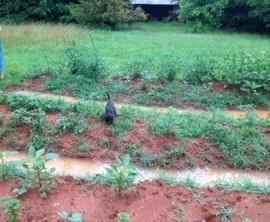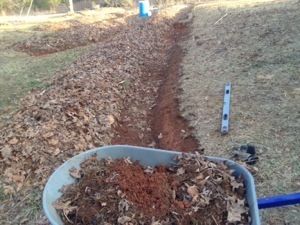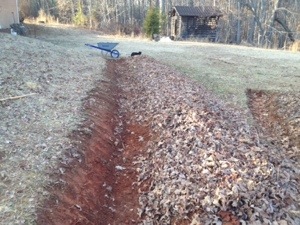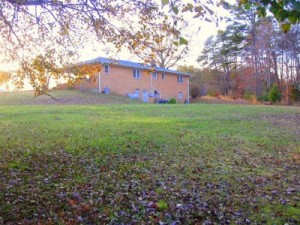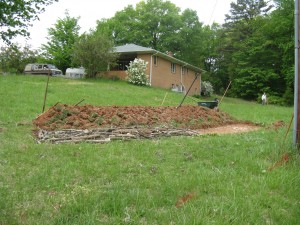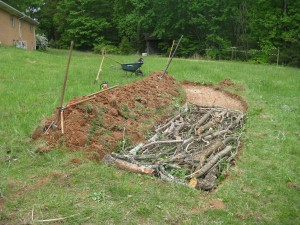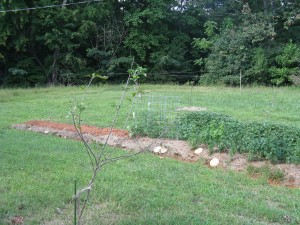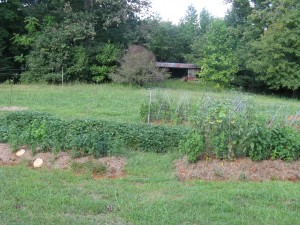The snow and rain held off today so after researching a few options on chicken feed, I suited up and headed out to our main garden to work on some things that have been on my winter homestead chores list.
I’ll start with a brief bit on our garden design. We have our raised beds laid out on contour. This means that they follow the pattern of the ground and are not arbitrarily straight. The purpose of this is to harvest the runoff of the upper yard into small garden swales that are in front of each bed.
Swales are a tried and true permaculture technique, and are basically level ditches on contour that stop runoff in place, and hold that water instead of letting it erode away our soil. Because the bottoms of the swales are not compacted, they allow water to infiltrate into the ground and slowly spread downhill. This water is then available to the surrounding plants and can greatly reduce irrigation needs, and increase soil fertility.
Our small hand dug garden swales were put in last spring, and have performed well. After big rains, they fill up and slowly release their catch, just as planned. However, some of the swales are not working perfectly, and I set out today to do some maintenance.
One of the problems is that water is not spreading uniformly across the swale, and that certain areas are holding water for longer periods than other. These swales are not level.
So today I grabbed a shovel, a hand hoe, and a 4 foot level and leveled the bottom of one of the uphill swales meticulously. It was quite a bit off level, maybe 6 inches to a foot over the entire length of the swale. Now it should fill as expected, and let water seep in evenly across the bed.
I also have noticed that the uphill side of some of the swales, or backcut, have eroded somewhat this winter with mini landslides. This happened because when we installed them, we left a steep backcut that was almost vertical, instead of a gentle sloping one. Not a huge deal, but I worked on that some, trying to allow the water a gentle path into the swale. I think the newly exposed soil would be a great place for some clover, plantain, and chicory though.
One of the benefits of the swales that we have experienced that I hadn’t thought of, is their mulch catching ability. I knew that swales can act as deposition features, catching organic matter and eventually filling in to ground level over time, but I didn’t realize that our swales would gather such an enormous amount of leaves from our huge oak tree at the top of the hill. This made for an easy time of mulching the winter garden, as I just scooped them out of the ditch, and up onto the beds.
That is one thing I want to be better at this year: mulch. Mulch keeps moisture in the soil, regulates temperature, and eventually breaks down to feed both plants and microbes. Mulch also hinders weed growth, and protects soil from heavy rains and other erosive forces.
Lastly, I scooped out the last of a batch of manure tea we had fermenting. Only the dregs remain, and I’ll need to add some more water soon to get it brewing again. Nothing like the smell of month old manure tea. We smelt it every time we went outside after I disturbed it. MMMmmnnn. Smells like healthy soil!
